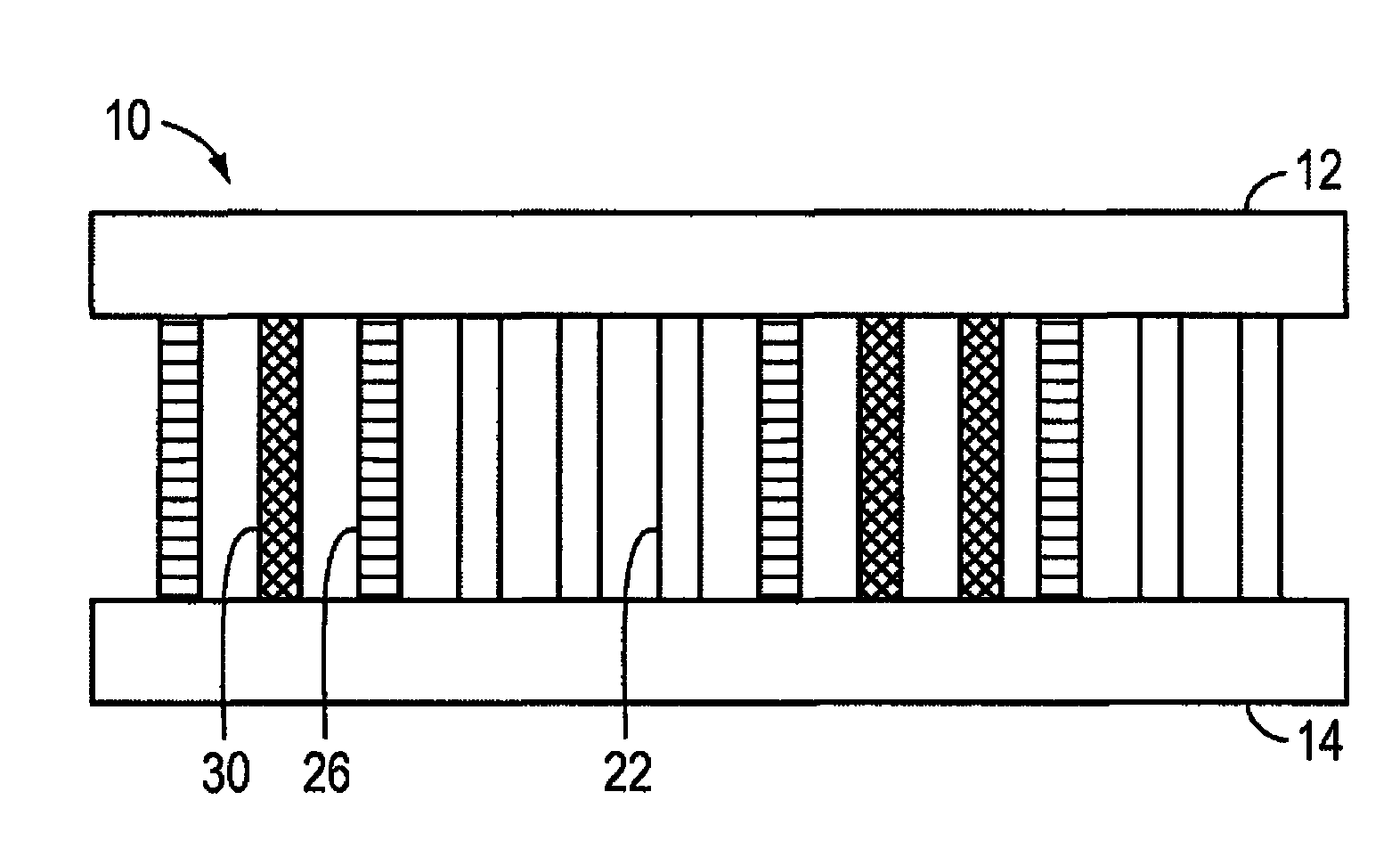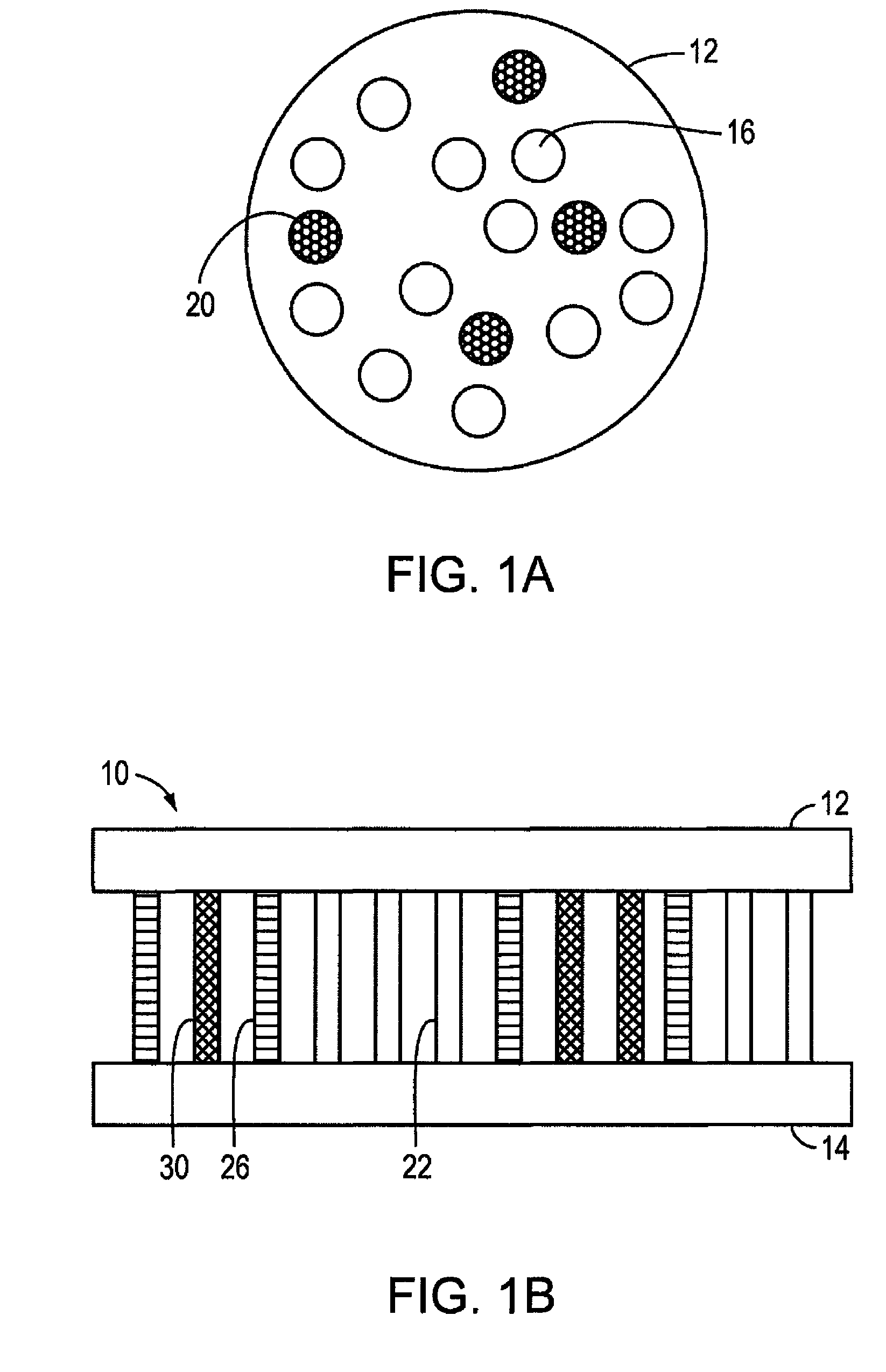Intelligent, universal, reconfigurable electromechanical interface for modular systems assembly
a modular system and electromechanical technology, applied in the direction of insulated conductors, cable connections, coupling device connections, etc., can solve the problems of space systems that are heavy, bulky and complex, and achieve the effects of reducing the need for or eliminating, reducing weight, and less complex devices
- Summary
- Abstract
- Description
- Claims
- Application Information
AI Technical Summary
Benefits of technology
Problems solved by technology
Method used
Image
Examples
Embodiment Construction
[0051]FIG. 1A shows a first substrate 12 for forming a reconfigurable electromechanical connection. The first substrate 12 includes a non-conductive array of elements 16 and one or more conductive regions 20. FIG. 1B shows a cross sectional view of reconfigurable electromechanical connection interface 10 between a first substrate 12 and a second substrate 14. The first substrate 12 and / or the second substrate 14 can take a variety of shapes. Suitable shapes include but are not limited to a square, circle, polygon, triangle, parallelogram, quadrilateral, hexagon, or octagon.
[0052]When the first substrate 12 and the second substrate 14 are mated, non-conductive array of elements 16 and conductive regions 20 can overlap. If a non-conductive array of element 16 of the first substrate 12 overlaps with a non-conductive array of the second substrate 14, a non-conductive connection 22 is formed. If a non-conductive array of element 16 of the first substrate 12 (or the second substrate 14) o...
PUM
| Property | Measurement | Unit |
|---|---|---|
| temperature | aaaaa | aaaaa |
| temperature | aaaaa | aaaaa |
| temperatures | aaaaa | aaaaa |
Abstract
Description
Claims
Application Information
 Login to View More
Login to View More - R&D
- Intellectual Property
- Life Sciences
- Materials
- Tech Scout
- Unparalleled Data Quality
- Higher Quality Content
- 60% Fewer Hallucinations
Browse by: Latest US Patents, China's latest patents, Technical Efficacy Thesaurus, Application Domain, Technology Topic, Popular Technical Reports.
© 2025 PatSnap. All rights reserved.Legal|Privacy policy|Modern Slavery Act Transparency Statement|Sitemap|About US| Contact US: help@patsnap.com



